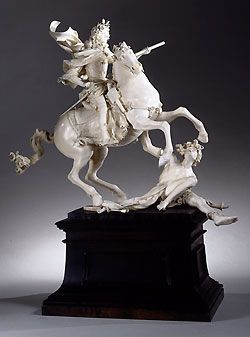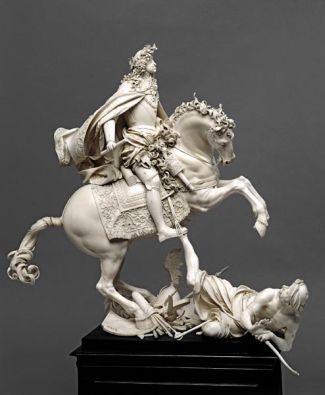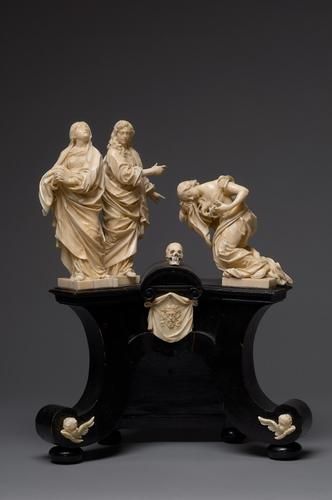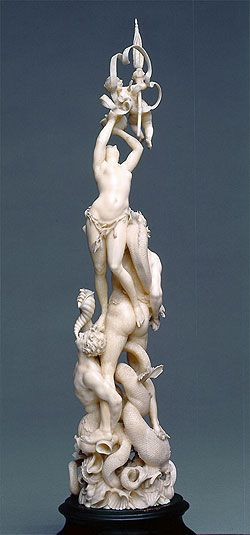Artists
Matthias Steinl
(1644-1727)
Austrian ivory sculptor
Do you think that you may own an ivory sculpture by Matthias Steinl? We authenticate, appraise, research and issue certificates of authenticity (COA) and provide consultations for all ivory sculptures by Matthias Steinl.
Matthias Steinl was an architect, a designer and one of Austria's finest Baroque sculptors. Engravings inspired Steinl's early work, which indicates that Steinl trained to be a craftsman. It is believed that Steinl studied in various European locations, ranging from Prague to the Netherlands.

King Joseph I on horseback Vienna, 1693 Ivory; H 70.8 cm (including base).

Kaiser Leopold I, Kunsthistorisches Museum

Kreuzigungsgruppe statuette, around 1685/87

Allegory of the Elements Water and Air Vienna C. 1688-1690 Walrus tusk; H 43.9 cm
Matthias Steinl was an architect, a designer and one of Austria's finest Baroque sculptors. Engravings inspired Steinl's early work, which indicates that Steinl trained to be a craftsman. It is believed that Steinl studied in various European locations, ranging from Prague to the Netherlands.
In the above piece, Steinl depicts the elements of water and air through a base of shells, dolphins and sea creatures, three entwined sea gods rise up: a triton blowing into a horn shaped shell, a young man carrying a fish on his back, and woman holding a shell.
During the 1670s, Steinl worked as a sculptor at the Cistercian monastery at Leubus (now Lubiaz) in Silesia. Eventually, Steinl led the sculpting workshop, formerly led by Matthias Knote. The workshop diligently worked to produce pieces for the Cistercian monastery's high altar, side altars, pulpit and choir stalls. Many of Steinl's pieces were destroyed after World War II.
Steinl directed the monastery workshop until 1682, after which he relocated to work for the court in Vienna. Steinl stayed in Breslau, producing sculptures and cartouches.
In 1688, Steinl became ivory engraver for the emperor of Vienna. Steinl continued to work as an imperial, ivory engraver until around 1712, producing numerous statuettes. Matthias Steinl is known as one of Vienna's most talented carvers. Though many of his pieces were destroyed during times of war, his surviving pieces belong to museums and collections around the world. Do you think you own an ivory carving by Matthias Steinl? Contact us. We are the ivory experts.
